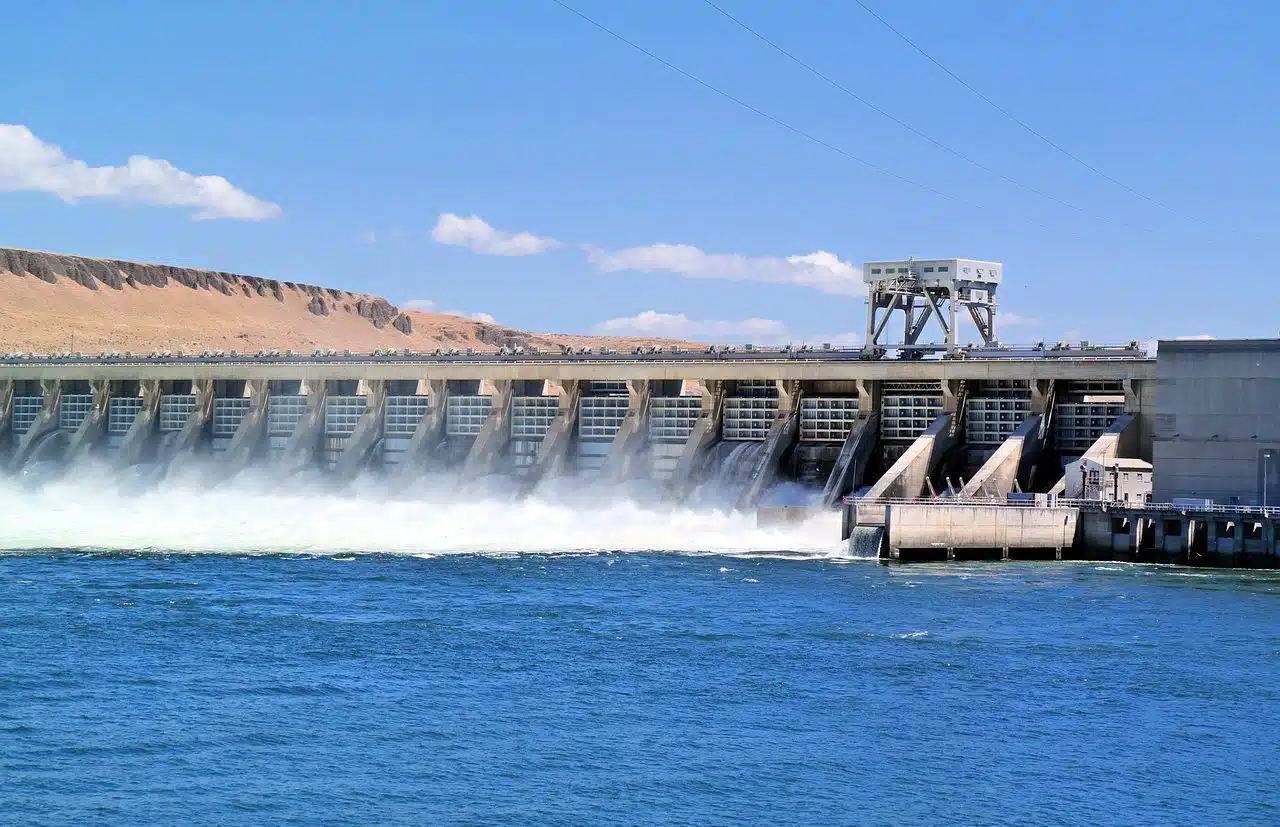
A hydroelectric plant uses hydraulic energy to produce electrical energy.
Hydroelectric is an adjective that refers to what belongs to or relates to hydroelectricity . This term is linked to electricity obtained through hydraulic energy , which is the type of energy generated by the movement of water .
Hydraulic or water energy, therefore, takes advantage of the kinetic and potential energy of waterfalls, tides and water currents, forming part of renewable energies since it is not exhausted with its use.
Hydroelectric power station
The infrastructure that uses hydraulic energy to generate electrical energy is known as a hydroelectric plant . Its operation is based on a waterfall that generates two levels of a channel: when the water falls from the upper level to the lower one, it passes through a hydraulic turbine that transmits the energy to a generator responsible for transforming it into electrical energy.
The exploitation of hydraulic energy through a hydroelectric plant can be developed in two different ways. On the one hand, it is possible to divert a river to take advantage of the speed of its flow and generate electrical energy. Another option is to build a dam and intercept the flow of water.

There are different types of hydroelectric plants.
Classification according to flow regime
Various types of hydroelectric power plants can be distinguished, depending on the point of view of the analysis. If they are studied according to their flow regime, the following four are recognized:
- Run-of-river power plant : It is also known as a run-of-river plant and uses part of the flow of a river to produce electrical energy. Its work is continuous since, because it does not have a reservoir, it does not have the capacity to store water. Its turbines work directly on the water that is available at all times and can have a vertical axis (for rivers with steep slopes) or horizontal (for low slopes).
- Reservoir : This is the most common type of hydroelectric plant. It uses a reservoir to store water and regulate the flow through the turbine. In this way, as long as it has a sufficient reserve, it can produce energy throughout the year. On the other hand, the investment necessary for its creation and maintenance is greater than the alternatives.
- Regulation : it serves to store the water that flows from the river and can supply consumption for several hours.
- Pumped : also called reversible , this type of hydroelectric plant can not only transform the potential energy of water into electricity, but is also capable of carrying out the reverse process, that is, increasing its potential energy through the consumption of electrical energy. This makes it a tool for storing energy, as if it were a battery of colossal dimensions.
Hydroelectric plants according to the fall of water
On the other hand, four types of hydroelectric power plants can be distinguished depending on the height of the water fall:
- High pressure : the height of the water fall is greater than 200 meters and they used to be associated with Pelton turbines, which are among the most efficient in the field of hydraulic energy.
- Medium pressure : using Francis or Kaplan turbines, its drop height ranges between 20 and 200 meters.
- Low pressure : their water differences do not exceed 20 meters and they use Kaplan turbines .
- Very low pressure : they use more recent technologies since Kaplan turbines are not useful in cases of differences in height less than 4 meters.
Finally, there is the tidal power plant (which uses the ebb and flow of the tides, especially in coastal areas with very different tides), the submerged tidal power plant (which uses underwater currents to obtain energy and dates back to 2002) and a class that takes advantage of the movement of waves (tested for the first time in 1995, in Scotland, after almost two decades of research).
